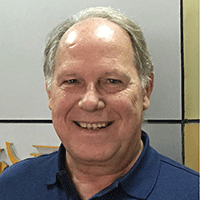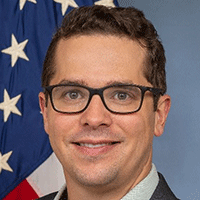Track 4

Professor John Thome
Prof. Emeritus EPFL,
Technical Director of JJ Cooling Innovation
Lausanne, Switzerland
Presentation Title: Passive Two-Phase Cooling of Electronics and Energy Efficiency
Abstract: Passive two-phase cooling of electronics has been around with us and progressing for many years, with very widespread use of wicked heat pipes and more recently vapor chambers. Two other passive two-phase devices are emerging strongly now: Loop thermosyphons (LTSs) and Pulsating heat pipes (PHPs. While vertical-pipe thermosyphons (evaporator at bottom and condenser at top in counterflow) have been and still are also widely used, loop thermosyphon cold plates are now emerging in the cooling industry to handle high heat flux applications, in which the working fluid flows up a riser tube from the evaporator to the condenser and then the condensate down through a downcomer tube back to the inlet of the evaporator. LTS technologies are available for the cooling of individual datacenter CPUs as well as cooling of multiple heat sources in Edge micro-datacenters, telecom photonics transmitters and entire high power datacenter racks (including AI). Pulsating heat pipes are the most recent addition to the category of passive cooling technologies, devices which create self-activated and self-induced two-phase flow without any internal wick structure, just a loop microchannel serpentine going back-and-forth from its evaporator zone to its condenser zone. These are gaining industrial traction for cooling of power electronics, 5G base stations, CPUs, etc. The talk will present and describe how LTSs and PHPs function and the keys to their performance and usage. Notably, when utilizing LTSs and PHPs, the thermal efficiency of electronics cooling attains the new goals for reducing electrical cooling power consumption, with PUEs as low as 1.017 and 1.030 in performance tests with air-cooled condensers, and in several cases using natural convection to air from the condenser are able to take the PUE to 1.00, that is zero energy consumption (fan off) that are promising for electronics on standby or low/medium operation. Numerous examples of actual units/systems for a variety of industries will be described.
Biography: John Thome is Prof. Emeritus EPFL, Technical Director of JJ Cooling Innovation in Lausanne, Switzerland and Chairman of ALPEMA (aluminum brased plate heat exchangers manufacturers association). He is a co-founder of JJ Cooling since 2018 and previously held the chair of Professor of Heat transfer at the EPFL while as well heading the Doctoral Program in Energy (over 100 PhD students). He received his PhD at Oxford University and is the author of 5 books and is the Editor-in-Chief of the 16-volume Encyclopedia of Two-Phase Heat Transfer and Flow. He received the 2017 Nusselt-Reynolds Prize, the IEEE 2019 Richard Chu ITHERM Award, the ASME 2019 Allan Kraus Thermal Management Medal and the 2010 ASME Heat Transfer Memorial Award. He is a long-time researcher and technology specialist in microscale and macroscale two-phase heat transfer and two-phase systems, pulsating heat pipes, loop thermsyphons and refrigeration systems. He is ranked by Google Scholar as 1st, 3rd and 4th in research citations in Boiling, Two-Phase Flow and Electronics Cooling, respectively. He has been actively engaged in developing new thermal technologies and simulation tools for the electronics cooling, nuclear power, petrochemical, automotive , refrigeration and air-conditioning industries.
Track 5

Dr. Adam A. Wilson
Team Leader, Thermal Sciences and Engineering Team
Energy Sciences Division, United States Army Combat Capabilities Development Command Army Research Laboratory
Presentation Title: Size and Timescale Matching for Transient-Aware Thermal Management
Abstract: Over the last decade, compact and extreme-environment thermal management has made large strides. Conventional thermal management approaches aim to minimize thermal resistance to the surroundings in order to keep temperature fluctuations due to varying heat loads below some critical temperature (which varies by the application). However, in an attempt to simplify and multifunctionalize components in the interest of reducing size, weight, and power (SWaP) required to meet operational goals, transient responses to heat loads may bring failure to bear sooner. In this talk, I will discuss key considerations when designing thermal management solutions for heavily SWaP-constrained platforms, and some recent demonstrations of these efforts coming out of our work at the Army Research Laboratory. Germane to these efforts are incorporation of phase-change enthalpy to extend thermal time constant when nearing a critical temperature. I will cover recent work in this area (both ours and others') and will highlight recent trends across the micro- and nanoscale heat transfer community that provide insights into efficiently designing transient-aware thermal management solutions.
Biography: Dr. Adam A. Wilson leads the Thermal Sciences and Engineering Team at the Army Research Laboratory in Adelphi, MD and serves as Program Manager for a multidisciplinary team of researchers across Army, Navy, and Air Force, and chairs the Interagency Advanced Power Group's Electrical Materials Panel. He earned his B.S. degree in Physics and B.A. in Mathematics from University of Northern Iowa and his Ph.D. in Engineering Physics from Rensselaer Polytechnic Institute. Adam's research in developing novel nanoscale thermal metrology techniques led him to Madrid, Spain as part of the NSF International Research Experience program, and then to the Army Research Laboratory for a postdoctoral appointment that has subsequently morphed into a career in federal civilian service researching thermal energy conversion, mitigation, and storage. He has received several honors and awards such as ARL's Technically Bold Award, multiple Best Paper Awards at IEEE ITherm, and Northern Iowa's Purple and Old Gold Award.
Track 6

Sheng Xu
UC San Diego
San Diego, CA
Presentation Title: Wearable Ultrasound Technology
Abstract: The use of wearable electronic devices that can acquire vital signs from the human body noninvasively and continuously is a significant trend for healthcare. The combination of materials design and advanced microfabrication techniques enables the integration of various components and devices onto a wearable platform, resulting in functional systems with minimal limitations on the human body. Physiological signals from deep tissues are particularly valuable as they have a stronger and faster correlation with the internal events within the body compared to signals obtained from the surface of the skin. In this presentation, I will demonstrate a soft ultrasonic technology that can noninvasively and continuously acquire dynamic information about deep tissues and central organs. I will also showcase examples of this technology's use in recording blood pressure and flow waveforms in central vessels, monitoring cardiac chamber activities, and measuring core body temperatures. The soft ultrasonic technology presented represents a platform with vast potential for applications in consumer electronics, defense medicine, and clinical practices.
The advent of soft ultrasonic technology represents a convergence of interdisciplinary expertise, combining principles from materials science, engineering, and medical research. At its core, this technology leverages flexible and biocompatible materials, meticulously engineered to interface seamlessly with the human body. Advanced microfabrication techniques further enhance its capabilities, enabling the integration of sophisticated components onto wearable platforms with unprecedented precision and reliability.
One of the key strengths of soft ultrasonic technology lies in its ability to penetrate deep tissues, capturing physiological signals with unparalleled fidelity. Unlike conventional surface measurements, which may be susceptible to environmental factors and external interference, signals acquired from deep tissues offer a direct window into the body's internal dynamics. This deeper insight enables more accurate assessments of vital parameters such as blood pressure, cardiac function, and core body temperature, facilitating earlier detection of abnormalities and proactive intervention.
Moreover, the noninvasive nature of soft ultrasonic technology ensures patient comfort and compliance, eliminating the need for invasive procedures or cumbersome monitoring equipment. This aspect is particularly crucial in clinical settings, where continuous monitoring of patients, especially those with chronic conditions, is paramount. By seamlessly integrating into everyday life, wearable devices powered by soft ultrasonic technology empower individuals to take charge of their health, fostering a culture of proactive wellness management.
Beyond healthcare, the versatility of soft ultrasonic technology extends into diverse fields, ranging from sports performance monitoring to military applications. In sports medicine, for instance, real-time assessment of athletes' physiological responses during training and competition can inform personalized training regimens and injury prevention strategies. Similarly, in military settings, wearable devices equipped with soft ultrasonic sensors offer invaluable insights into soldiers' health and performance in demanding operational environments, enhancing mission readiness and troop welfare.
As research and development in soft ultrasonic technology continue to advance, the horizon of possibilities expands even further. From enhanced diagnostics and therapeutic interventions to personalized healthcare solutions tailored to individual needs, the potential for positive impact is boundless. By bridging the gap between technological innovation and human health, soft ultrasonic technology epitomizes the transformative power of interdisciplinary collaboration, paving the way for a future where healthcare is not just reactive but proactive, preventive, and personalized. In essence, the journey of soft ultrasonic technology represents a testament to human ingenuity and a beacon of hope for a healthier, more connected world. As we navigate the complexities of modern healthcare, it serves as a reminder that the most profound solutions often emerge at the intersection of science, technology, and compassion.
Biography: Dr. Sheng Xu is a Professor and Jacobs Faculty Scholar at UC San Diego. He earned his B.S. degree in Chemistry from Peking University and his Ph.D. in Materials Science and Engineering from the Georgia Institute of Technology. Subsequently, he pursued postdoctoral studies at the Materials Research Laboratory at the University of Illinois at Urbana-Champaign. His research group is interested in developing new materials and fabrication methods for soft electronics, with a particular focus on wearable ultrasound technology. His research has been presented to the United States Congress as a testimony to the importance and impact of funding from the National Institutes of Health. He has received numerous honors, including the NIH Maximizing Investigators' Research Award, NIH Trailblazer Award, Sloan Fellowship, IEEE EMBS Technical Achievement Award, ETH Zürich Materials Research Prize for Young Investigators, MRS Outstanding Early Career Investigator Award, and a finalist of the Blavatnik National Awards for Young Scientists. He is an AIMBE Fellow.